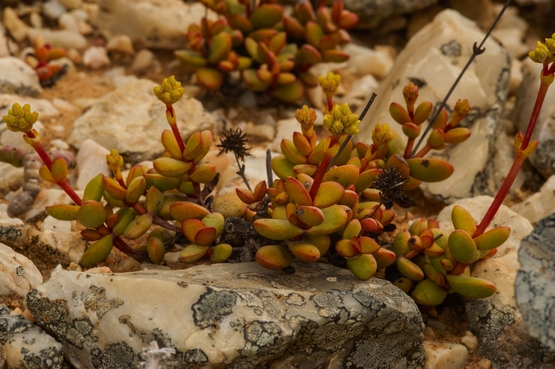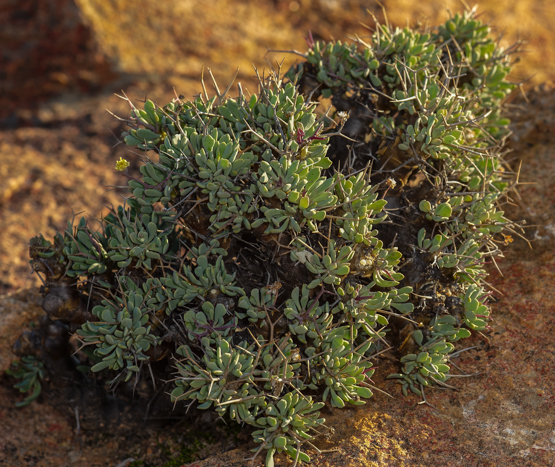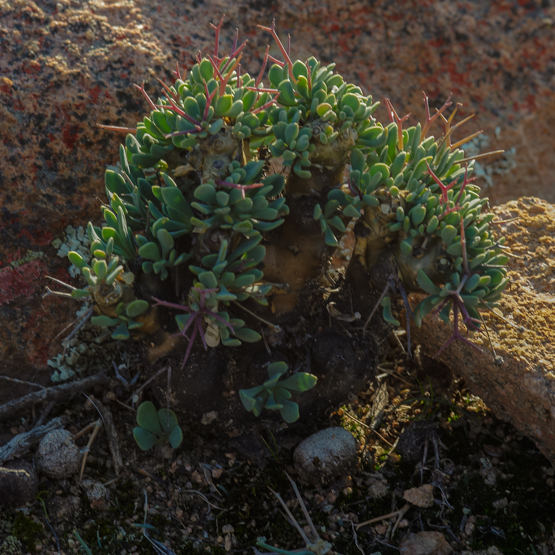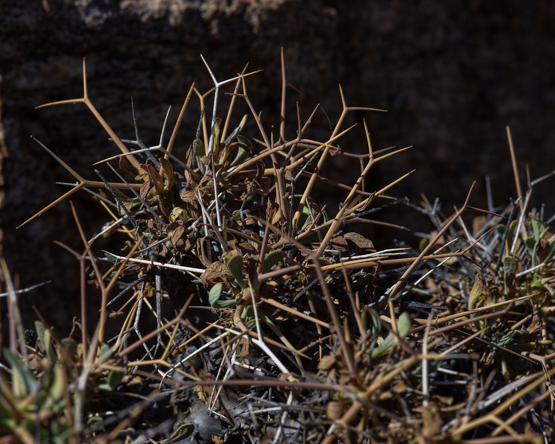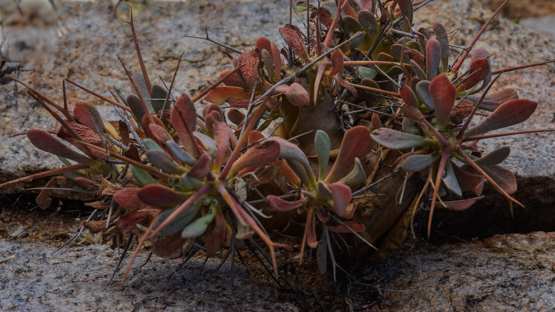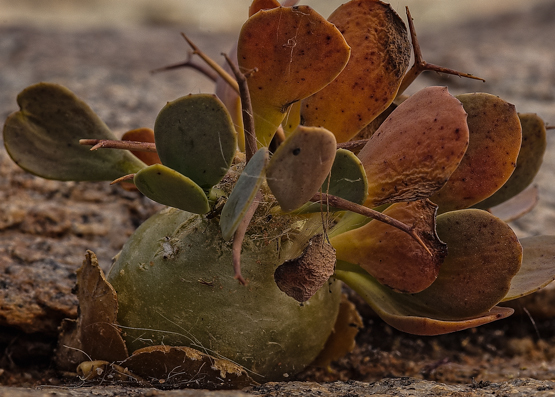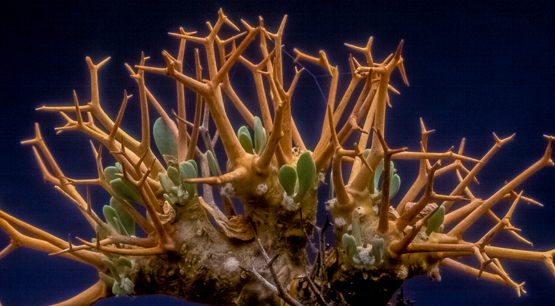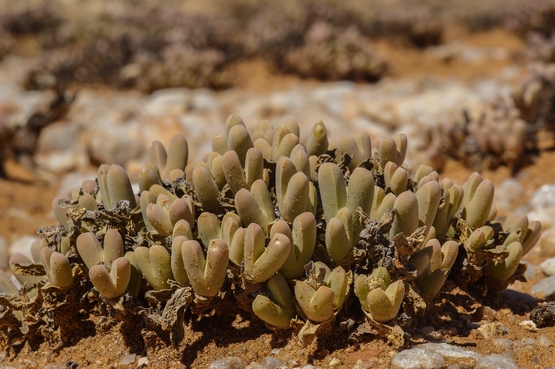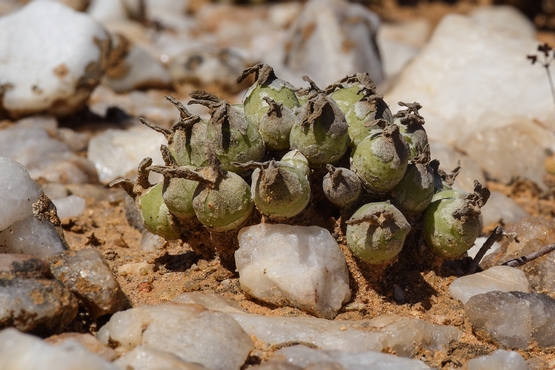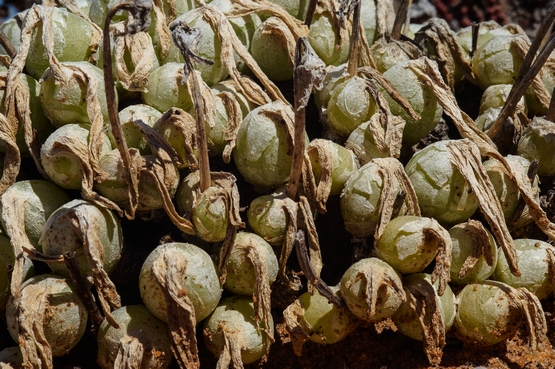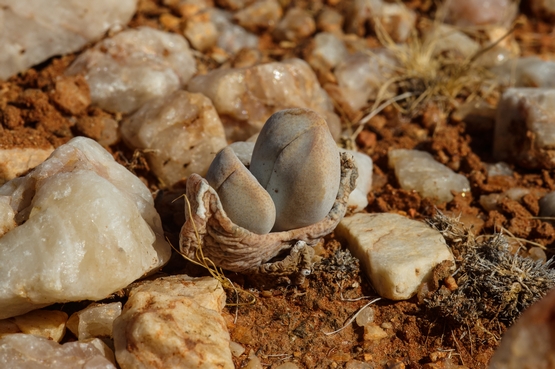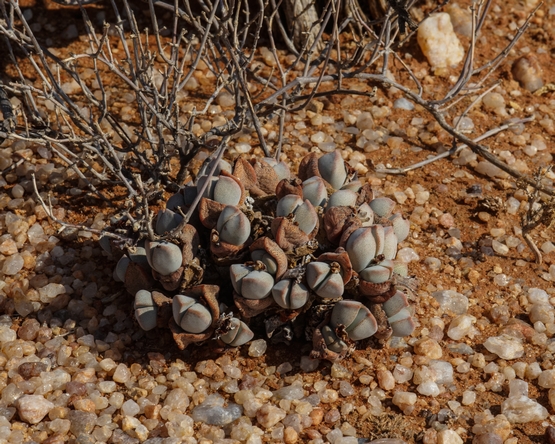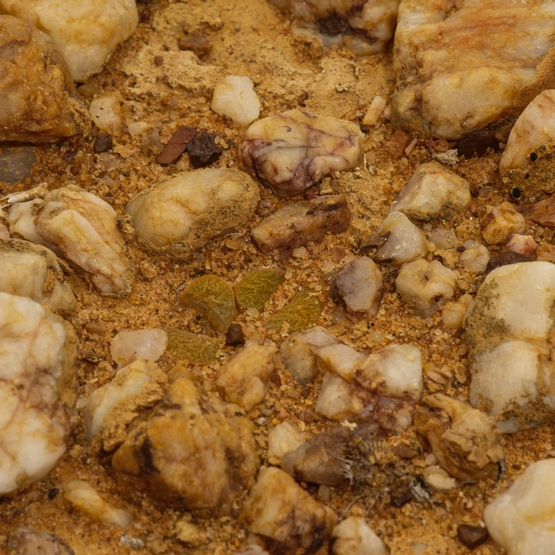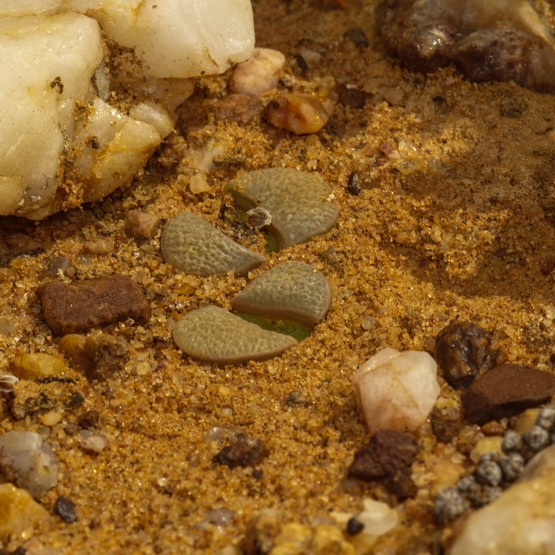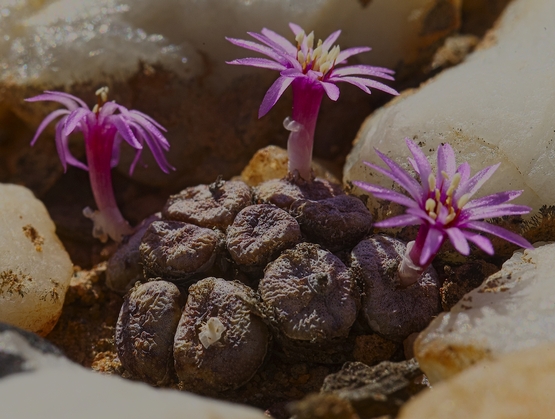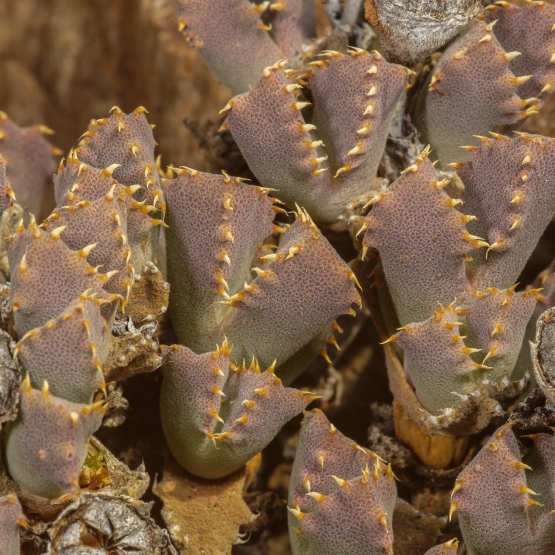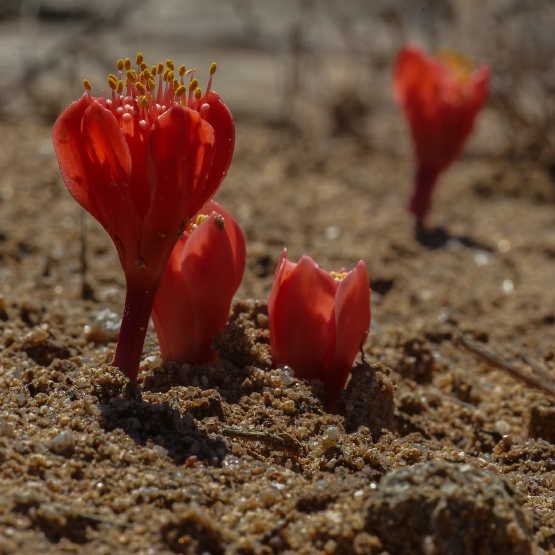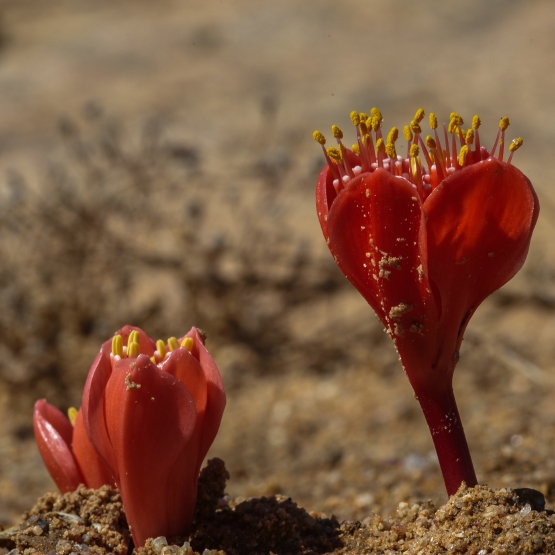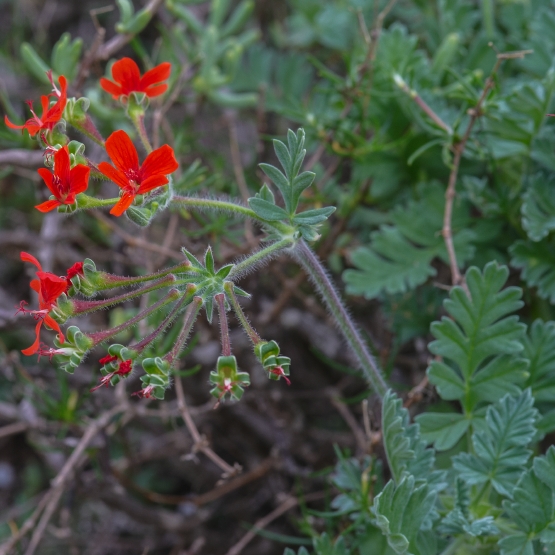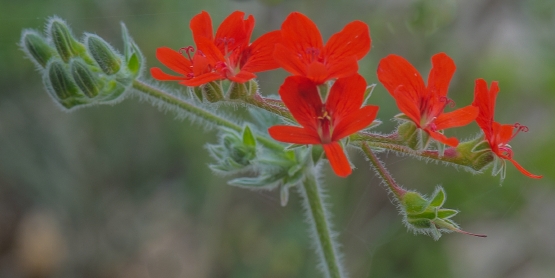One of the joys of looking for plants in the wild is the fact that you keep making new discoveries. Not earth-shattering ones, but things like a certain species in an unexpected place, an early flowering specimen or one that is much bigger than the ones you know, fruits you see for the first time etc.
Often you come across a plant which you can not identify but which is similar to ones you know, so you have some idea in what direction you should look to find out what it is. Especially when it has one or more striking characteristics, it is easy to convince yourself you will have no problem getting an ID, but sometimes you’re in for a surprise.
The subject of this post is a case in point.
When I saw the plants in the first two pictures, I was so taken by the beautiful and most unusual colour of the leaves that I supposed this aspect would quickly lead me to the proper name. Well, not quite.
For a while I thought they might represent an aberrant form of either C. nudicaulis or C. brevifolia, but the differences were too big.
It took me 3 years to get the right brainwave: throw the names “Crassula” and “Port Nolloth” at Google and see what it comes up with. And BINGO, there it was in a recent article in Avonia by my friend Gerhard Wagner from Berlin.
Amongst many other things he says the following:
“It is remarkable that H. R. Toelken in the Flora of Southern Africa (1985, p. 221) mentions extreme forms of C. atropurpurea v. cultriformis from the coastal area north of Holgat River with much smaller leaves. Such plants, with highly succulent, almost round leaves, we also found south of Port Nolloth at Mc Dougall’s Bay, almost on the beach. Including these plants in C. atropurpurea v. cultriformis seems strange and difficult to understand because of the great differences in habit. It is peculiar that these plants, although they are easily accessible and should be well known, have not been investigated more closely and hardly any mention of them has been made in the literature.”
The first two pictures were taken at McDougall’s Bay, 5 Sept. 2010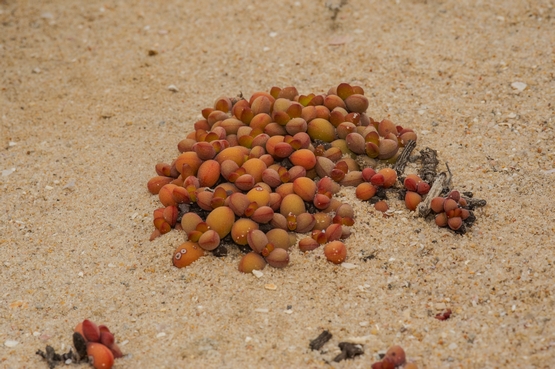
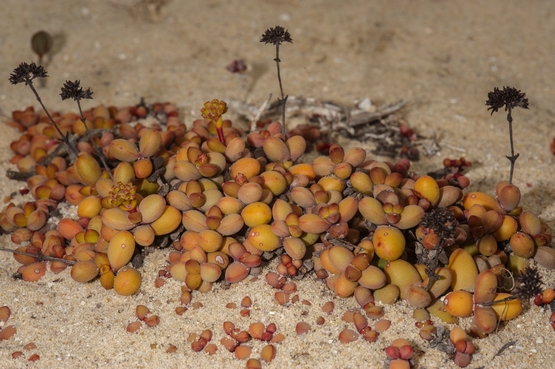
The next two are from the same place, 5 Oct. 2011
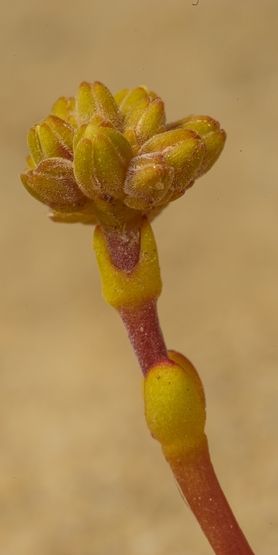
The last two were taken 8 Sept. 2010 and show the more conventional form of this variety in a more usual habitat (slopes with quartz gravel).